Henry Ford is one of the most influential Americans of all time. He revolutionized the manufacturing industry in the United States and Europe and had a significant impact on the 20th-century economy and society.
Today (01/26/2013), Ford Vietnam is organizing a “Special Sales Day: Commemorating the 150th birthday of Henry Ford” at all Ford dealerships nationwide. In celebration of this event, Autodaily is offering its readers images of the man who founded the Ford automotive brand.
In compiling the list of the 100 most influential people of all time, Time magazine named Henry Ford. In a separate list of the 20 most influential Americans of all time, Henry Ford ranked eighth. According to Forbes’ list of billionaires in February 2008, Henry Ford’s total assets amounted to $188.1 billion.
Henry Ford is one of the 20 most influential Americans of all time
Born on July 30, 1863, in Dearborn, Michigan (USA), the founder of Ford Motor Company was one of the first to apply assembly-line production to car manufacturing. He not only revolutionized the manufacturing industry in the United States and Europe but also had a significant impact on the 20th-century economy and society to the extent that the combination of mass production, high wages, and low product costs for consumers was called “Fordism”.
In the summer of 1873, Henry saw a self-propelled machine on the road, a stationary steam engine used to thresh wheat or provide power for a mill. The person controlling it, Fred Reden, put it on a few wheels connected to a drive chain. Henry was fascinated by the machine and the following year, Reden taught Henry how to start and control it. Ford later said, “That experience taught me that I was an engineer by instinct”.
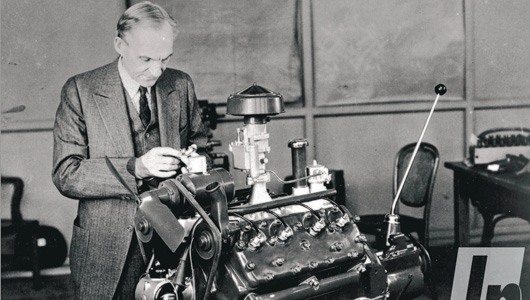 Henry Ford: “I am an engineer by instinct”
Henry Ford: “I am an engineer by instinct”
Henry brought his passion for machines home. His father gave him a pocket watch when he started his teenage years. At the age of fifteen, he was famous for his skill in repairing watches, having taken apart and reassembled watches of friends and neighbors dozens of times.
His mother died in 1876. It was a traumatic event for Henry. His father hoped that eventually Henry would manage the family farm, but he did not enjoy farming. And with his mother’s death, there was not much to hold his interest on the farm anymore. He later said, “I had no particular affection for the farm. It was my mother on the farm that I loved.”
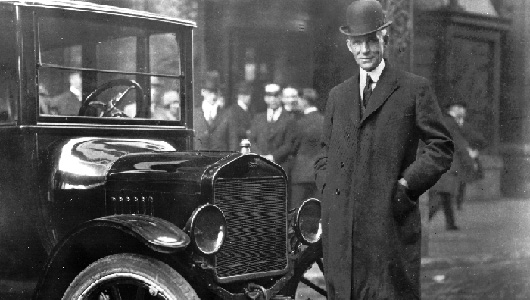 The founder of Ford has a great role in the history of the automotive industry
The founder of Ford has a great role in the history of the automotive industry
In 1879, he left the family to go to the nearby city of Detroit and worked as an apprentice mechanic, first with James F. Flower & Bros., and later with Detroit Dry Dock Co. In 1882, he returned to Dearborn to work on the family farm and became skilled at operating small steam engines. He was hired by the Westinghouse Company to service various types of machinery.
When he married Clara Bryant in 1888, Ford made a living as a farm laborer and ran a sawmill. They had only one child, Edsel Bryant Ford (1893–1943).
In 1891, Ford became an engineer at the Edison Illuminating Company, and after being promoted to chief engineer in 1893, he had enough time and money to devote himself to experimenting with gasoline engines. These experiments culminated in 1896 when he completed the construction of his first self-propelled vehicle called the Quadricycle, which he test drove on June 4 of that year. After several test drives, Henry Ford came up with various ways to improve the Quadricycle.
After this initial success, Ford went to the Edison Illuminating Company in 1899 along with several other investors, and they subsequently formed the Detroit Automobile Company. The Detroit Automobile Company quickly went bankrupt because Ford continued to improve the design instead of selling cars. Ford raced his cars against those of other companies to showcase the advantages of his designs. Due to his focus on racing, he established a second company, the Henry Ford Company. During this period, he himself was the driver and won the race against Alexander Winton, a famous and much-admired racer, on October 10, 1901. Ford was forced to leave the company and was replaced by Henry M. Leland in 1902, and the company was reorganized as Cadillac.
Henry Ford, along with eleven other investors and $28,000 in capital, founded the Ford Motor Company in 1903. Ford drove a newly designed car to an exhibition where the car ran one mile on the ice of Lake St. Clair in 39.4 seconds, a new ground speed record. Impressed by this success, famous racer Barney Oldfield, who named Ford’s new “999” model to show appreciation for a new steam-powered race held that day, drove the car around the country and made the Ford brand famous throughout America.
The Ford brand became famous throughout America from 1903
Henry Ford was also one of the early supporters of the Indianapolis 500 race. He stunned his fellow tycoons by doubling the daily wages of most of his workers in 1914, eleven years after he founded his first automobile factory. He knew what he was doing. The purchasing power of workers increased, stimulating their consumption needs. Ford called it the ‘wage motive’. The application of the vertical assembly line and other business tricks also contributed to the company’s success.
In 1908, Ford Motor Company launched the Model T designed by a Hungarian named Jozsef Galamb. From 1909 to 1913, Ford entered dismantled Model Ts into races, finishing first (though not within specifications) in a “Two Oceans” race (crossing the United States) in 1909 and setting a speed record while racing around a circular track at Detroit Fairgrounds in 1911 with racer Frank Kulick.
The legendary Model T
In 1913, Ford attempted to rebuild the Model T for the Indianapolis 500 race, but was informed that the regulations required the car to be weighed down by 1,000 pounds (450 kg) before it could compete. Ford gave up, and soon after, he completely quit racing and criticized that he was not satisfied with the sport’s regulations and at that time he needed to focus on developing the increasingly popular Model T.
Racing was no longer necessary as a means to advertise cars to the public in 1913 because the Model T had become famous and was present on all the roads of America. It was in this year that Henry Ford brought the moving assembly line into his factories, which allowed for greatly increased productivity. Although Ford’s name is often associated with the idea, other sources suggest that the idea and its development originated from Clarence Avery, Peter E. Martin, Charles E. Sorensen, and C.H. Wills.
By 1918, half of the cars in the United States were Model Ts. Henry Ford’s design, which he passionately praised and supported, continued until 1927 (after its popularity had waned) with a total production of fifteen million units. This was a record that stood for the next 45 years. It is believed that Ford said, “Any customer can have a car painted any color that he wants so long as it is black,” although this story seems inaccurate. Earlier Model Ts were painted in multiple colors, including red, until the development of the assembly line imposed black because it dried faster.
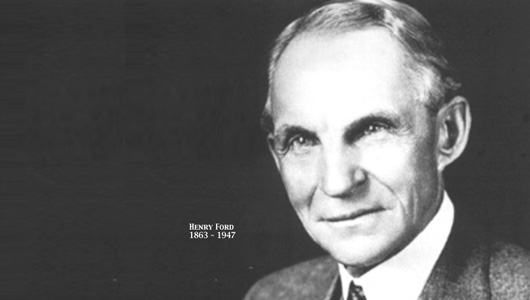 Henry Ford – one of the richest men in America
Henry Ford – one of the richest men in America
In December 1918, after losing a race for political office, Henry Ford handed over management of Ford Motor to his son Edsel Ford. However, Henry still retained ultimate decision-making authority and occasionally reversed his son’s opinions. Henry and Edsel bought out all the remaining stock from other investors, making the company solely owned by their family.
In 1921, Ford Motor products accounted for 55% of the total car output in the United States. However, the subsequent period was not optimistic as Ford was overtaken by rival General Motors, which became the leading automobile company in America. But in terms of influence on the automotive and transportation industry, Henry Ford is still the first name to be mentioned.
Thế Đạt synthetized (TTTĐ)






























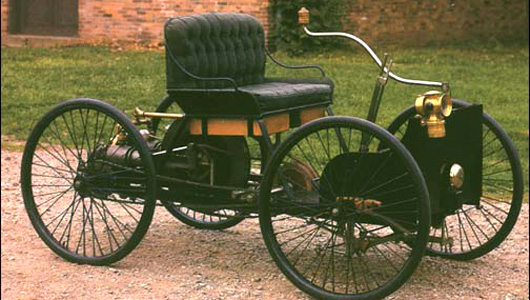
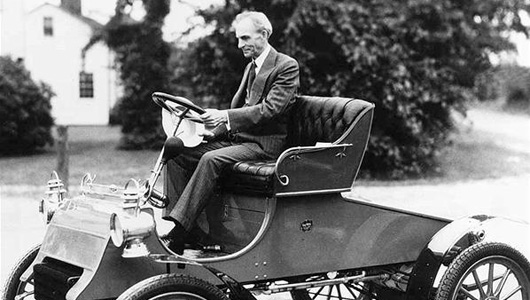
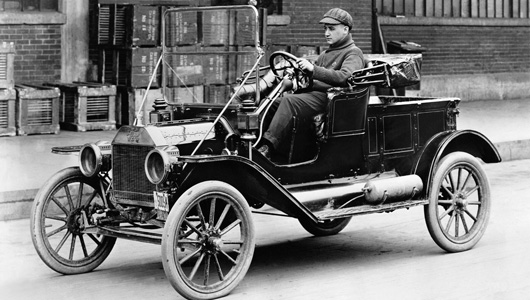
![[Quick Review] Ford Territory: A Powerful Competitor to Tucson, Corolla Cross](https://vnauto.net/wp-content/uploads/2023/11/xehay-fordterritory-10102022-3-150x150.jpg)












